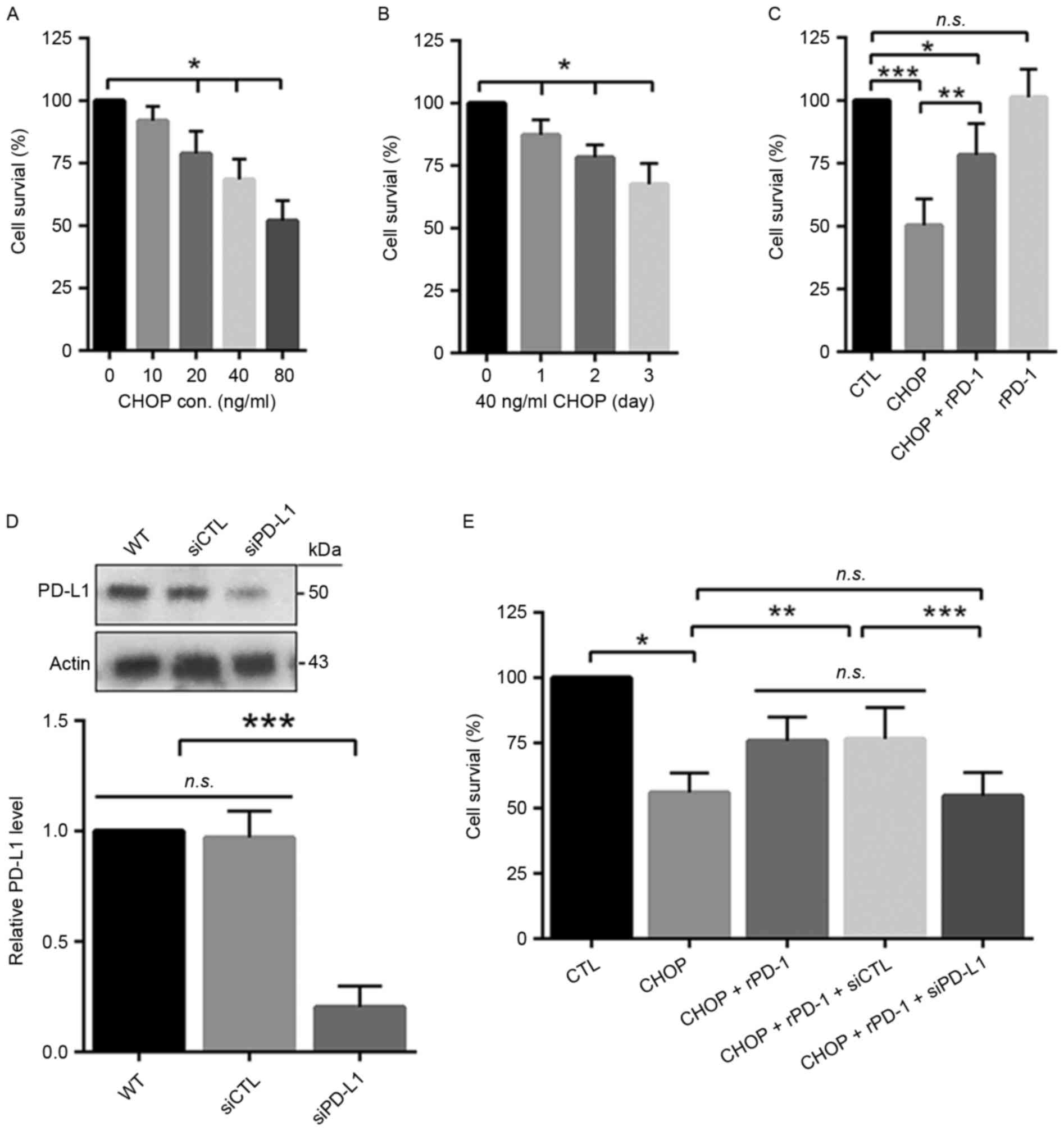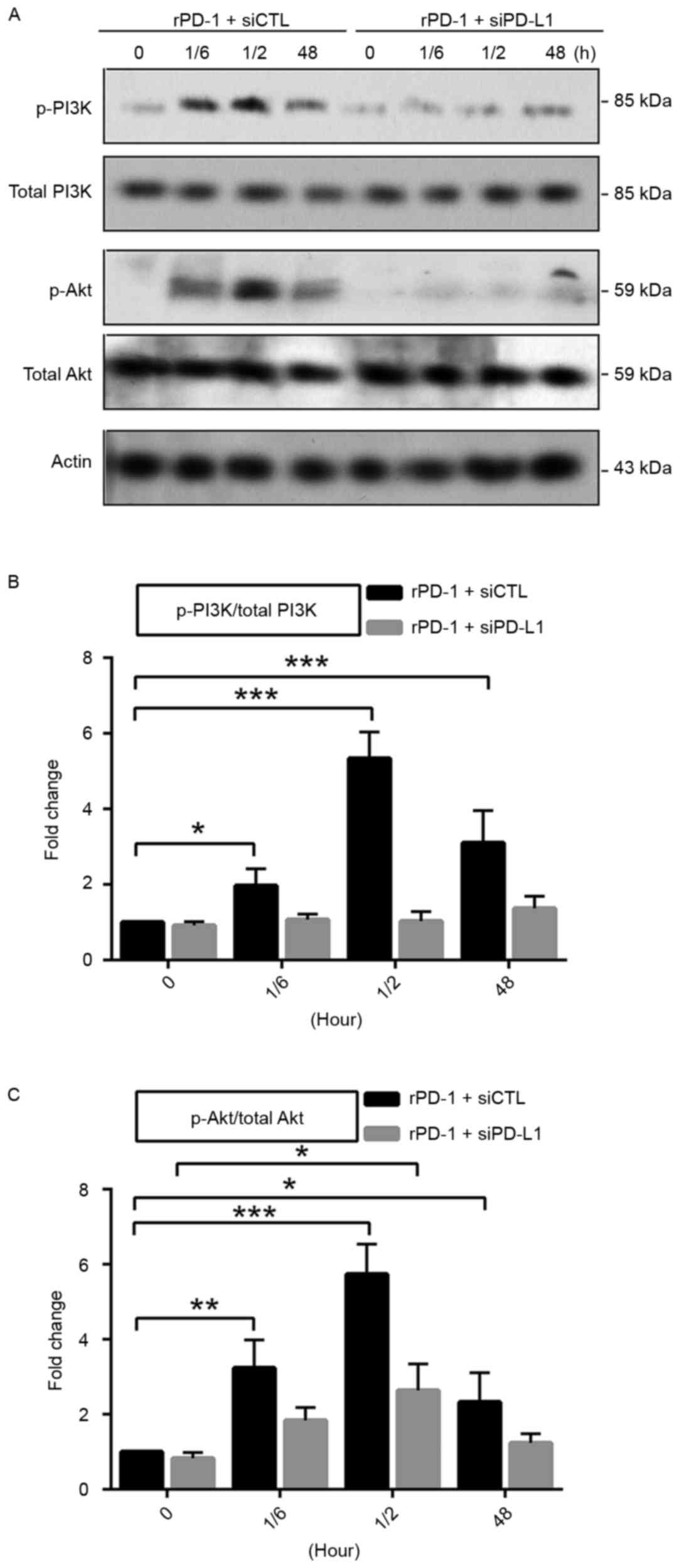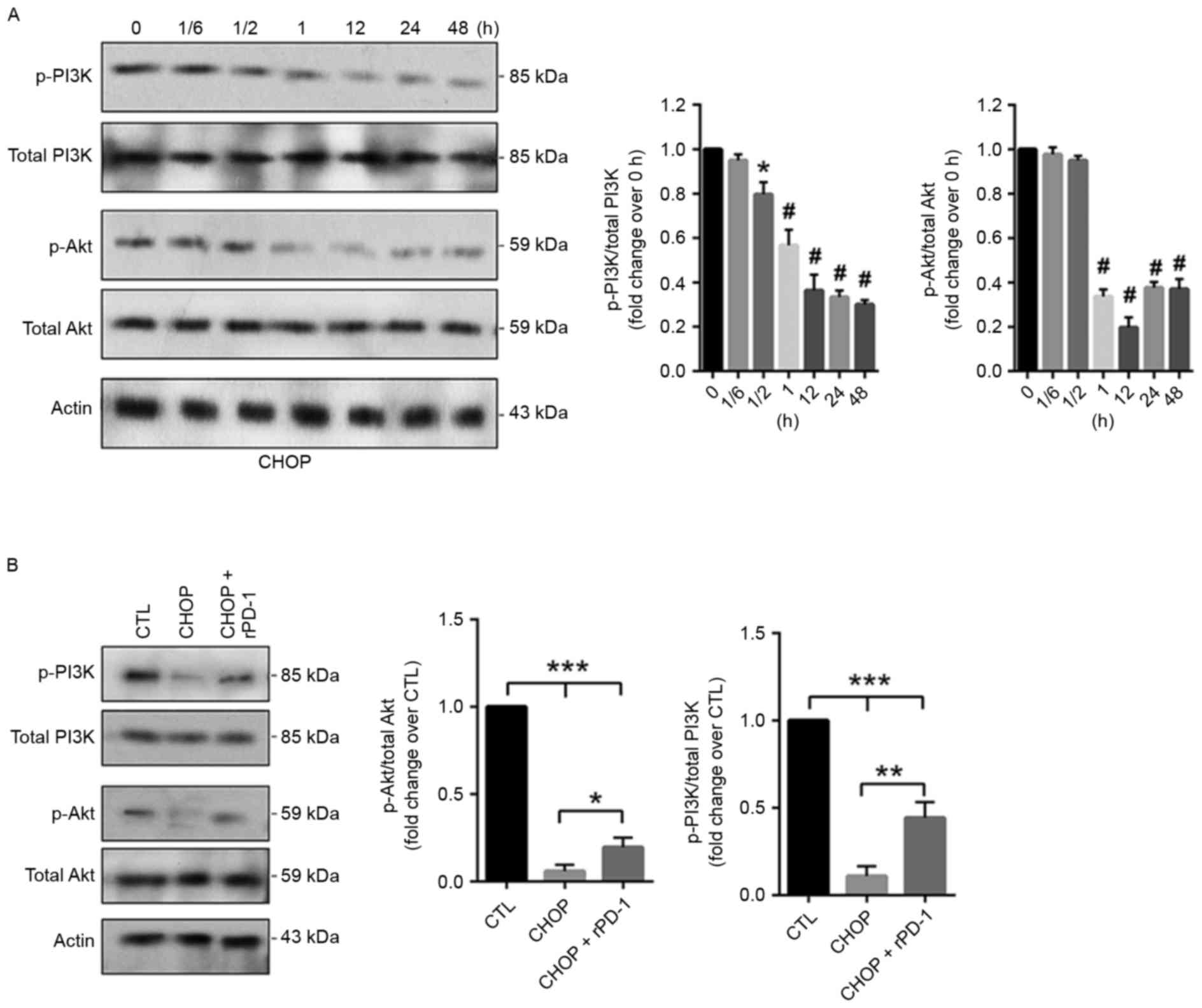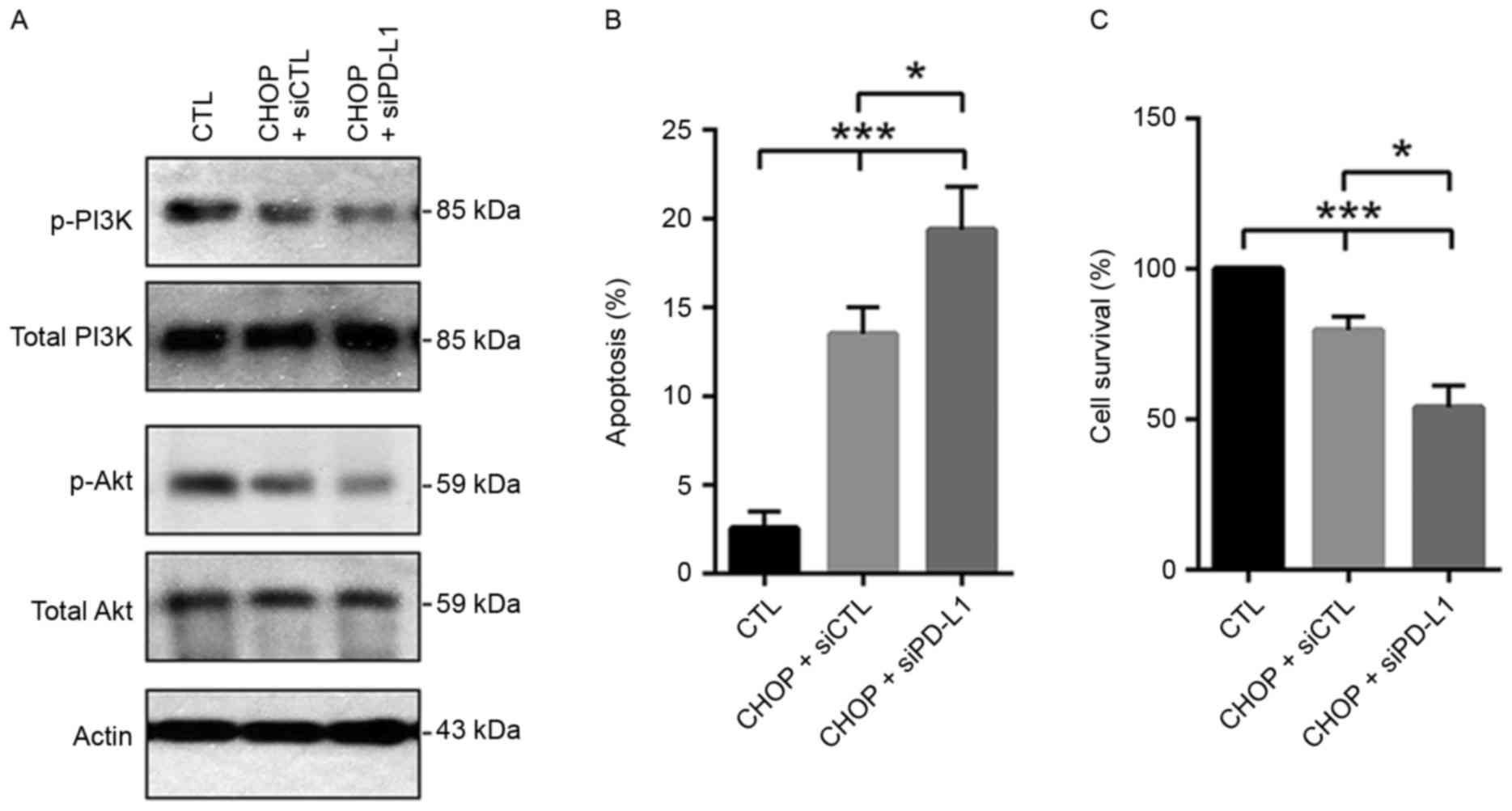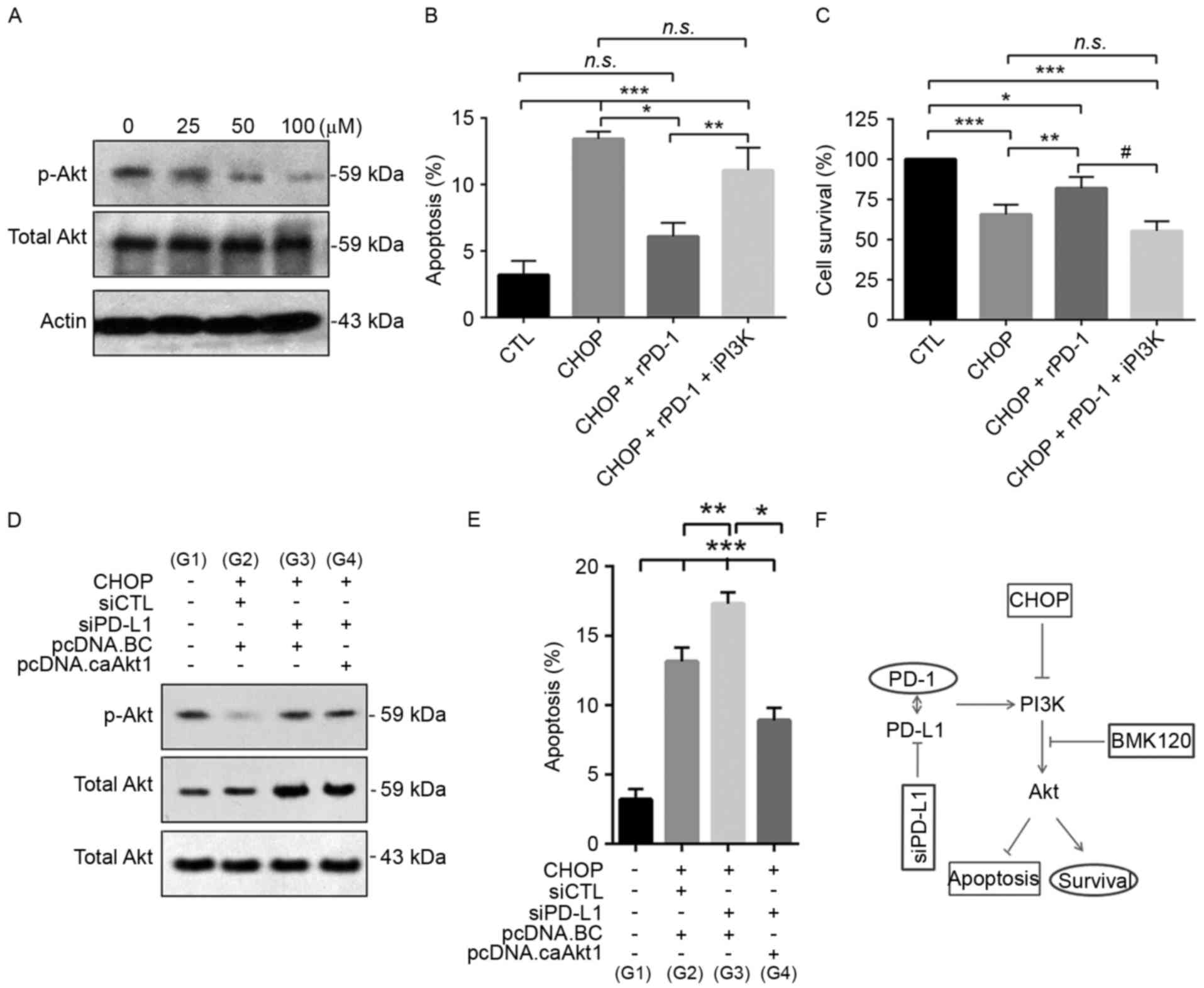|
1
|
Mehta-Shah N and Younes A: Novel targeted
therapies in diffuse large B-cell lymphoma. Semin Hematol.
52:126–137. 2015. View Article : Google Scholar : PubMed/NCBI
|
|
2
|
Reiter A and Klapper W: Recent advances in
the understanding and management of diffuse large B-cell lymphoma
in children. Br J Haematol. 142:329–347. 2008. View Article : Google Scholar : PubMed/NCBI
|
|
3
|
Kubuschok B, Held G and Pfreundschuh M:
Management of diffuse large B-cell lymphoma (DLBCL). Cancer Treat
Res. 165:271–288. 2015. View Article : Google Scholar : PubMed/NCBI
|
|
4
|
Chiappella A, Castellino A and Vitolo U:
State-of-the-art therapy for advanced-stage diffuse large B-cell
lymphoma. Hematol Oncol Clin North Am. 30:1147–1162. 2016.
View Article : Google Scholar : PubMed/NCBI
|
|
5
|
Dong Y, Sun Q and Zhang X: PD-1 and its
ligands are important immune checkpoints in cancer. Oncotarget.
8:2171–2186. 2017.PubMed/NCBI
|
|
6
|
Goodman A, Patel SP and Kurzrock R:
PD-1-PD-L1 immune-checkpoint blockade in B-cell lymphomas. Nat Rev
Clin Oncol. 14:203–220. 2017. View Article : Google Scholar : PubMed/NCBI
|
|
7
|
Thompson RH, Gillett MD, Cheville JC,
Lohse CM, Dong H, Webster WS, Krejci KG, Lobo JR, Sengupta S, Chen
L, et al: Costimulatory B7-H1 in renal cell carcinoma patients:
Indicator of tumor aggressiveness and potential therapeutic target.
Proc Natl Acad Sci USA. 101:pp. 17174–17179. 2004; View Article : Google Scholar : PubMed/NCBI
|
|
8
|
Quan L, Chen X, Liu A, Zhang Y, Guo X, Yan
S and Liu Y: PD-1 blockade can restore functions of T-cells in
epstein-barr virus-positive diffuse large B-cell lymphoma in vitro.
PLoS One. 10:e01364762015. View Article : Google Scholar : PubMed/NCBI
|
|
9
|
Bai H, Wei J, Deng C, Yang X, Wang C and
Xu R: MicroRNA-21 regulates the sensitivity of diffuse large B-cell
lymphoma cells to the CHOP chemotherapy regimen. Int J Hematol.
97:223–231. 2013. View Article : Google Scholar : PubMed/NCBI
|
|
10
|
Maxwell SA, Li Z, Jaye D, Ballard S,
Ferrell J and Fu H: 14-3-3zeta mediates resistance of diffuse large
B cell lymphoma to an anthracycline-based chemotherapeutic regimen.
J Biol Chem. 284:22379–22389. 2009. View Article : Google Scholar : PubMed/NCBI
|
|
11
|
Wang J, Zhang Y, Liu X, Ma J, Liu P, Hu C
and Zhang G: Annexin A5 inhibits diffuse large B-cell lymphoma cell
invasion and chemoresistance through phosphatidylinositol 3-kinase
signaling. Oncol Rep. 32:2557–2563. 2014. View Article : Google Scholar : PubMed/NCBI
|
|
12
|
Black M, Barsoum IB, Truesdell P,
Cotechini T, Macdonald-Goodfellow SK, Petroff M, Siemens DR, Koti
M, Craig AW and Graham CH: Activation of the PD-1/PD-L1 immune
checkpoint confers tumor cell chemoresistance associated with
increased metastasis. Oncotarget. 7:10557–10567. 2016. View Article : Google Scholar : PubMed/NCBI
|
|
13
|
Liu J, Zhang Y, Liu A, Wang J, Li L, Chen
X, Gao X, Xue Y, Zhang X and Liu Y: Distinct dasatinib-induced
mechanisms of apoptotic response and exosome release in
imatinib-resistant human chronic myeloid leukemia cells. Int J Mol
Sci. 17:5312016. View Article : Google Scholar : PubMed/NCBI
|
|
14
|
Breton G, Yassine-Diab B, Cohn L,
Boulassel MR, Routy JP, Sékaly RP and Steinman RM: siRNA knockdown
of PD-L1 and PD-L2 in monocyte-derived dendritic cells only
modestly improves proliferative responses to Gag by CD8(+) T cells
from HIV-1-infected individuals. J Clin Immunol. 29:637–645. 2009.
View Article : Google Scholar : PubMed/NCBI
|
|
15
|
Majchrzak A, Witkowska M and Smolewski P:
Inhibition of the PI3K/Akt/mTOR signaling pathway in diffuse large
B-cell lymphoma: Current knowledge and clinical significance.
Molecules. 19:14304–14315. 2014. View Article : Google Scholar : PubMed/NCBI
|
|
16
|
Mundi PS, Sachdev J, McCourt C and
Kalinsky K: AKT in cancer: New molecular insights and advances in
drug development. Br J Clin Pharmacol. 82:943–956. 2016. View Article : Google Scholar : PubMed/NCBI
|
|
17
|
Kiyasu J, Miyoshi H, Hirata A, Arakawa F,
Ichikawa A, Niino D, Sugita Y, Yufu Y, Choi I, Abe Y, et al:
Expression of programmed cell death ligand 1 is associated with
poor overall survival in patients with diffuse large B-cell
lymphoma. Blood. 126:2193–2201. 2015. View Article : Google Scholar : PubMed/NCBI
|
|
18
|
Chu EC and Tarnawski AS: PTEN regulatory
functions in tumor suppression and cell biology. Med Sci Monit.
10:RA235–RA241. 2004.PubMed/NCBI
|















